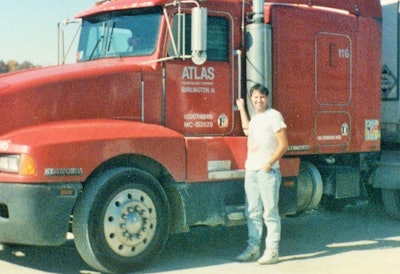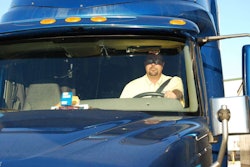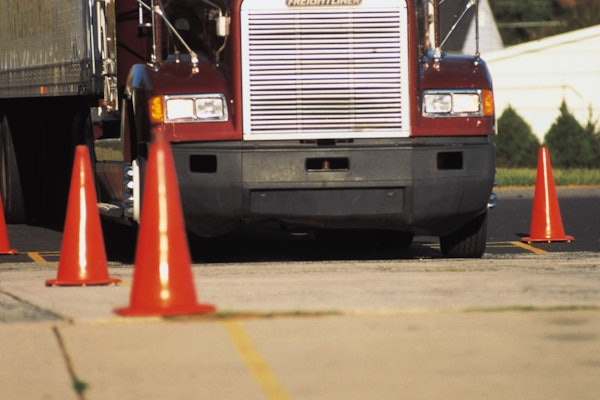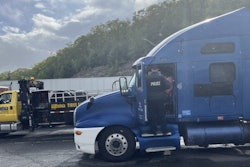 Scott Hainline, pictured in 1990, early on in his long tenure trucking, wrote this letter in response to Clifford Petersen’s discourse on the pride and professionalism inherent in, among other things, on-highway courtesies once common among truckers as a positive example to the public.
Scott Hainline, pictured in 1990, early on in his long tenure trucking, wrote this letter in response to Clifford Petersen’s discourse on the pride and professionalism inherent in, among other things, on-highway courtesies once common among truckers as a positive example to the public.Many of the traditional on- and off-highway practices that once defined the American trucker are rarely seen in today’s transportation industry. Years gone by, drivers would almost always get on the CB radio to check on an 18-wheeler pulled off on to the shoulder, always “blinked” our lights when passing one another and gladly assisted a fellow driver when backing if needed. This behavior by drivers in today’s industry has almost gone the way of the dinosaur. I believe that past traditions are not being passed down as they one were, due to an ever changing industry.
Years ago, if one wanted to become a trucker, you would try to find a trucker to ride with, and they would teach you how to drive along with the expectations of the profession, which involved common courtesies and traditions. You spent many, many days and in some cases nights with this driver until you were, in some cases, old enough to receive your learner’s permit and, once you had acquired the skills needed, were allowed to take the host state’s driver skills testing in order to receive your license to operate a tractor-trailer.
There were what are known today as truck-driving schools back then, but they were not the primary route as they are today. Most drivers were introduced to trucking by a fellow driver. Today, however (and frankly many years past now), a person with a desire to enter the industry attends a school operated either by a privately owned company, a community college or a transportation company. These courses are short, by and large, and range from four weeks on. In most cases, they will only bring the student to a skill level to satisfy the states’ minimum requirements for obtaining a commercial driver’s license.

If you believe that at the end of a four-week CDL training course you’re going to be a truck driver, you’ll be sadly mistaken, and this is supported by the “turnover” in the industry, especially for those who are relatively young. While spending time riding and learning to drive from the professional driver, the prospective trucker sees firsthand the hardships, which include wait times at shippers/receivers, roadside breakdowns, and the myriad other things we’re all familiar with. Those prospective truckers came in with a pretty good understanding of what they were getting into prior to accepting employment with a company.
Today, prospective drivers fall “prey” to schools advertising promises of making “big money” from the start, after only four short weeks. Those employed after completing basic CDL training and paired with a driver trainer at this point are often enough paired with someone who has not experienced the level of “professionalism” that once was the standard in this industry. The prospective trucker then isn’t allowed the time to fully understand the industry as it operates today; the host employer only wants the trainer to bring the new driver to a skill set where they can now be dispatched in their own truck.
I have seen, however, some drivers out there who carry on the traditions of past. We are few in number, in my experience, but we should take time and help when we can and pass our knowledge of these traditions on. Knowing them can make the difference between a career and just another job.
Stay safe out there! –Scott Hainline, Good Hope, Ill.











